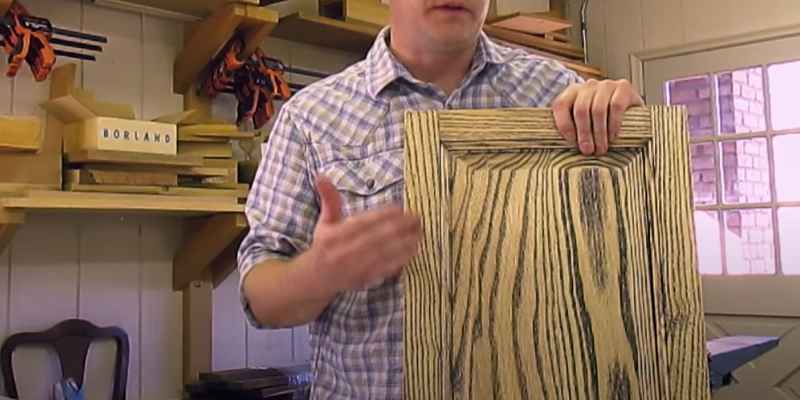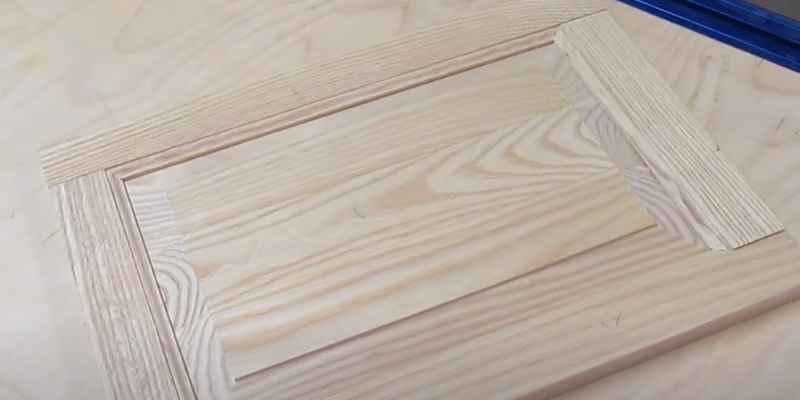To finish ash wood, start by applying a clear wood filler, then dye and sand the filler. Next, apply a seal coat of shellac for extra protection and a smooth finish.
Additionally, consider using oil-and-wax finishes for a natural look that enhances the wood’s beauty and durability. These finishes penetrate deeply, providing moisture protection and are easy to maintain. Experiment with different techniques like dyeing and applying stains to achieve the desired color and finish on your ash wood projects.
With the right finishing process, you can bring out the unique grain and characteristics of ash wood while ensuring long-lasting results.
Introduction To Ash Wood Finishing
Discover the best techniques for finishing ash wood, including staining, sealing, and adding contrast to the grain. From applying clear wood filler to using dye and oil finishes, these methods will enhance the natural beauty of ash wood while providing protection against moisture.
Whether you’re a woodworker or a DIY enthusiast, these tips will help you achieve stunning results with your ash wood projects.
Why Choose Ash Wood?
Ash wood is a popular choice for furniture and flooring due to its exceptional strength and durability. Its attractive grain patterns and light color make it a versatile option for a wide range of design styles. Additionally, ash wood is known for its excellent shock resistance, making it suitable for high-traffic areas.
Common Challenges
One common challenge when finishing ash wood is its open grain structure, which can result in uneven stain absorption. Additionally, as ash wood ages, it tends to yellow, which should be considered when choosing a finish. Moreover, achieving a smooth texture can be challenging due to its open grains.

Preparation Steps For Ash Wood
Cleaning and sanding are crucial steps before finishing ash wood to achieve a smooth and professional result.
Cleaning The Surface
- Start by wiping the surface with a damp cloth to remove dust and dirt.
- Use a mild detergent solution to clean any stubborn stains on the wood.
- Rinse the surface thoroughly with clean water and let it dry completely.
Sanding Techniques
- Begin sanding with a coarse grit sandpaper to remove any rough spots or imperfections.
- Gradually progress to finer grit sandpapers to smooth out the surface.
- Ensure to sand along the wood grain direction for a uniform finish.
- Use a sanding block or machine for consistent results and to avoid uneven sanding.
After completing these preparation steps, your ash wood will be ready for finishing with your preferred stain or sealant for a beautiful and durable end result.
Choosing The Right Stain For Ash Wood
When it comes to finishing ash wood, choosing the right stain is crucial to achieving the desired look. Whether you want to accentuate the natural grain or add a touch of color, selecting the appropriate stain can make all the difference. Let’s explore some popular staining options for ash wood.
Black Oil Stain
Black oil stain is a popular choice for adding depth and richness to ash wood. It penetrates the wood, enhancing the natural grain and creating a striking contrast. The black oil stain can give the wood a bold and dramatic appearance, perfect for creating a statement piece.
Dye Options
When it comes to dye options, ash wood offers versatility in achieving consistent coloring. Unlike pigment stains that accentuate the large pores, dyes provide a more uniform coloration. Whether it’s a traditional wood tone or a vibrant hue, dyes allow for greater customization and control over the final look of the wood.
Application Techniques For Stunning Results
To achieve stunning results when finishing ash wood, consider using dye instead of pigment stain to create consistent coloring and accentuate the wood’s natural beauty. Applying a clear finish after using boiled linseed oil can further enhance the wood grain.
Keep in mind that ash wood may yellow with age, similar to maple, when finished with a clear coat.
Stain & Seal Process
To achieve a stunning finish on ash wood, the stain and seal process is a popular choice. It involves applying a stain to the wood to enhance its natural beauty and then sealing it to protect it from moisture. When choosing a stain, it is important to consider the color and type of wood you are working with to achieve the desired result.
To apply the stain, use a brush, rag, or spray gun to evenly coat the wood. Allow it to penetrate for a few minutes before wiping off the excess with a clean cloth. Once the stain is dry, apply a sealant to protect the wood from damage and give it a glossy finish.
Dye & Wood Grain Filler
Another technique for achieving stunning results on ash wood is the dye and wood grain filler process. This technique involves applying a dye to the wood to change its color and then filling the grain with a wood filler to create a smooth surface.
To apply the dye, use a brush or spray gun to evenly coat the wood. Allow it to dry before applying the wood grain filler. To fill the grain, apply the filler with a putty knife and scrape off any excess. Once the filler is dry, sand the surface to create a smooth finish.
Adding Contrast To The Pores
To add contrast to the pores of the wood, you can use a technique called ebonizing. This involves applying a black stain to the wood and wiping it off to leave the pores darkened.
To ebonize ash wood, apply a black stain to the surface and wipe it off with a cloth. Allow it to dry before applying a clear coat to protect the wood. This technique can be used to create a dramatic effect on ash wood, especially when combined with other finishing techniques.
In conclusion, there are several application techniques that can be used to achieve stunning results on ash wood. Whether you choose to stain and seal, dye and fill, or ebonize the wood, it is important to choose the right technique for the type of wood and the desired result. With the right tools and techniques, you can create a beautiful finish that enhances the natural beauty of the wood.
Enhancing The Wood Grain
Enhancing the wood grain of ash wood can bring out its natural beauty and create a stunning finish. Whether you’re working on furniture, flooring, or other woodworking projects, there are several techniques you can use to enhance the wood grain and achieve a professional-looking result.
Using Grain Filler
When finishing ash wood, using a grain filler can help create a smooth and even surface by filling in the natural pores and grain of the wood. This technique is especially effective for open-grain woods like ash, as it prevents the finish from being absorbed unevenly, resulting in a blotchy appearance. Apply the grain filler in the direction of the wood grain and remove the excess filler to reveal a beautifully smooth surface ready for finishing.
Adding Contrast To Pores
To enhance the natural beauty of ash wood, adding contrast to the pores can create a striking visual effect. One method to achieve this is by using a pore filler that is darker than the wood itself. Apply the pore filler over the surface and then remove the excess, leaving the darker filler in the pores to create contrast. This technique highlights the natural texture of the wood grain and adds depth to the overall finish.
Special Finishes For Ash Wood
To finish ash wood, you have a variety of options including staining, dyeing, and using oil or wax finishes. Dye is recommended over pigment stain to achieve more consistent coloring, and oil-and-wax finishes are great for protecting the wood from moisture while enhancing its natural beauty.
Boiled linseed oil can also be used to accentuate the wood grain.
Ash wood is known for its beautiful grain patterns and versatility, making it a popular choice for woodworking projects. When it comes to finishing ash wood, there are several special techniques that can enhance its natural beauty and create unique effects. In this section, we will explore two special finishes for ash wood: the weathered bark finish and ebonizing ash wood.
Weathered Bark Finish
The weathered bark finish is a technique that gives ash wood a rustic and aged appearance, resembling the texture and color of weathered tree bark. This finish is perfect for creating a natural and organic look in your woodworking projects. Here is a step-by-step guide on how to achieve the weathered bark finish:
- Start by sanding the ash wood to a smooth and even surface.
- Apply a wood grain filler to fill in any pores or imperfections in the wood.
- Once the filler is dry, apply a dark stain or dye to the wood, focusing on the areas where the bark texture will be emphasized.
- Using a brush or sponge, create texture on the stained areas by dabbing or stippling the surface.
- Allow the stain to dry completely.
- Apply a clear protective finish, such as polyurethane or varnish, to seal the wood and enhance its durability.
The weathered bark finish can add character and depth to your ash wood projects, giving them a natural and timeless appeal.
Ebonizing Ash Wood
Ebonizing ash wood is a technique that involves darkening the natural color of the wood to create a rich black finish. This finish is perfect for adding drama and sophistication to your woodworking projects. Here is a step-by-step guide on how to ebonize ash wood:
- Start by sanding the ash wood to a smooth and even surface.
- Apply a wood dye or stain in a dark color, such as black or ebony, to the wood surface.
- Allow the dye or stain to penetrate the wood for the desired amount of time.
- Wipe off any excess dye or stain with a clean cloth.
- Apply a clear protective finish, such as lacquer or polyurethane, to seal the wood and enhance its durability.
Ebonizing ash wood can create a dramatic and elegant look, making it a perfect choice for modern and contemporary woodworking projects.
By using these special finishes, you can elevate the beauty of ash wood and create stunning pieces that stand out. Whether you prefer a rustic weathered bark finish or  a sleek ebonized look, these techniques will help you achieve the desired effect on your ash wood projects.
a sleek ebonized look, these techniques will help you achieve the desired effect on your ash wood projects.
Maintaining The Natural Beauty Of Ash Wood
Oil And Beeswax Finishes
Oil-and-wax finishes, combining mineral oil, tung oil, or linseed oil with beeswax or carnauba wax, deeply penetrate ash wood to enhance its natural beauty and shield it from moisture. These finishes are simple to buff and reapply, ensuring long-lasting protection.
Keeping White Ash From Yellowing
When finishing white ash, consider using dye over pigment stain to achieve consistent coloring, as pigment stain may emphasize the wood’s large pores. While all topcoat finishes are suitable for ash wood, it’s essential to note that white ash tends to yellow over time, similar to maple, under clear finishes.
Advanced Tips And Tricks
When it comes to finishing ash wood, utilizing advanced techniques can elevate the final result. From applying unique stains to sealing with precision, these tips and tricks can help you achieve a professional finish.
Applying Unicorn Spit Stain
- Prepare the wood surface by sanding it smooth.
- Apply the Unicorn Spit Stain using a brush or cloth in even strokes.
- Allow the stain to dry completely before applying any sealant.
Sealed Ngr Dye Stain
- Ensure the wood is free of dust and debris before staining.
- Apply the NGR Dye Stain evenly with a brush or applicator.
- Let the stain penetrate the wood for the desired duration before wiping off excess.
Remember to test the stain on a small, inconspicuous area of the wood to ensure the color and finish meet your expectations before proceeding with the entire project.
Frequently Asked Questions
What Is The Best Finish For Natural Ash Wood?
The best finish for natural ash wood is a natural oil or beeswax wax finish. These finishes penetrate deep into the wood, enhancing its natural beauty and protecting it from moisture. They are also easy to buff and reapply, making them a great choice for ash wood.
How To Finish White Ash Wood?
To finish white ash wood, consider using dye for consistent coloring. Topcoat finishes are suitable, but note that white ash yellows over time. Apply a clear finish for protection. Experiment with BLO to enhance grain before adding a clear finish.
How To Make Ash Wood Grain Pop?
To make ash wood grain pop, use boiled linseed oil (BLO) to enhance the grain. After the BLO dries, apply a clear finish for a beautiful result. Try this technique on a scrap piece for best results.
What Are The Disadvantages Of Ash Wood?
Ash wood has a few disadvantages. Its open grains can make it difficult to achieve a smooth texture. It is also susceptible to insects and fungus when exposed to soil, making it unsuitable for outdoor furniture.
Conclusion
Finishing ash wood requires careful consideration of the desired outcome and the techniques that will be used to achieve it. Whether using oil and wax finishes, stains, or dyes, it is important to choose the right product for the job and to follow the manufacturer’s instructions carefully.
By taking the time to properly prepare the wood, apply the finish, and buff and reapply as needed, you can create a beautiful and long-lasting finish that highlights the natural beauty of the wood.


